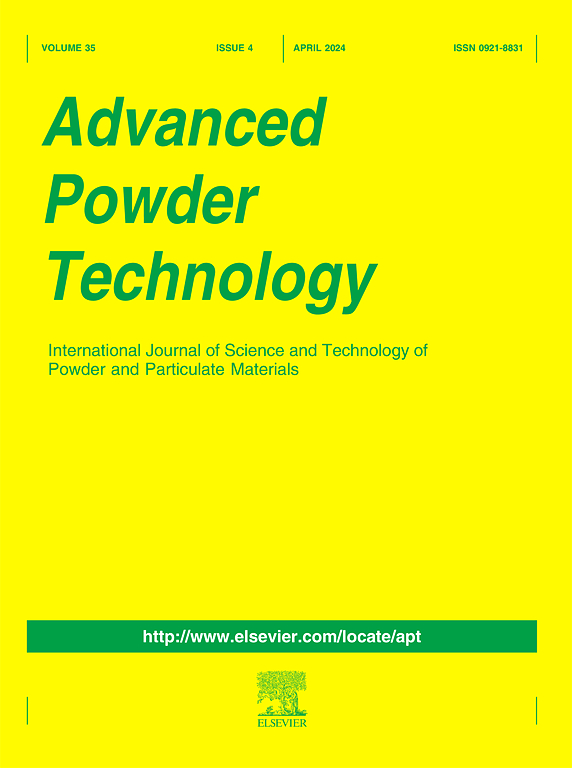中空二氧化硅纳米粒子壳结构对聚酰亚胺复合薄膜介电性能的影响
IF 4.2
2区 工程技术
Q2 ENGINEERING, CHEMICAL
引用次数: 0
摘要
一种中空二氧化硅纳米颗粒(HSNP)/聚酰亚胺(PI)复合材料有望应用于半导体低介电常数材料。研究了HSNP壳层结构对HSNP/PI复合材料介电性能的影响。结果表明,减小HSNP壳层厚度(增加空气比例)或减小HSNP密度(减小电场中的偶极子极化)可以降低HNSP/PI复合膜的介电常数和介电损耗。当HNSP的壳厚从37.94 nm减小到13.81 nm,壳密度从1.95 g/cm3减小到1.75 g/cm3, HSNP含量从0 vol%增大到20 vol%, HSNP/PI复合膜介电常数从4.42减小到3.85(在1 MHz时)。阐明了空心粒子壳型对复合材料介电性能的影响。这些发现有助于促进空心粒子在低介电材料中的进一步应用。本文章由计算机程序翻译,如有差异,请以英文原文为准。

The effect of hollow silica nanoparticle shell structure on the dielectric properties of polyimide composite films
A hollow silica nanoparticle (HSNP)/polyimide (PI) composite is expected to be applied to a low dielectric constant material for semiconductors. The effect of the shell structure of the HSNP on the HSNP/PI composite’s dielectric properties was investigated. The results indicated that the dielectric constant and dielectric loss of HNSP/PI composite film can be lowered by reducing the HSNP shell thickness (increase the air proportion) or decreasing the HSNP density (reduce the dipole polarization in electric field). When the shell thickness of HNSP decreases from 37.94 nm to 13.81 nm, the shell density decreases from 1.95 g/cm3 to 1.75 g/cm3, the HSNP content increases from 0 vol% to 20 vol%, the HSNP/PI composite film dielectric constant reduces from 4.42 to 3.85(at 1 MHz). The effect of the hollow particles’ shell configuration on the composite’s dielectric properties was also clarified. These findings can help to promote the further application of hollow particles in low-dielectric materials.
求助全文
通过发布文献求助,成功后即可免费获取论文全文。
去求助
来源期刊

Advanced Powder Technology
工程技术-工程:化工
CiteScore
9.50
自引率
7.70%
发文量
424
审稿时长
55 days
期刊介绍:
The aim of Advanced Powder Technology is to meet the demand for an international journal that integrates all aspects of science and technology research on powder and particulate materials. The journal fulfills this purpose by publishing original research papers, rapid communications, reviews, and translated articles by prominent researchers worldwide.
The editorial work of Advanced Powder Technology, which was founded as the International Journal of the Society of Powder Technology, Japan, is now shared by distinguished board members, who operate in a unique framework designed to respond to the increasing global demand for articles on not only powder and particles, but also on various materials produced from them.
Advanced Powder Technology covers various areas, but a discussion of powder and particles is required in articles. Topics include: Production of powder and particulate materials in gases and liquids(nanoparticles, fine ceramics, pharmaceuticals, novel functional materials, etc.); Aerosol and colloidal processing; Powder and particle characterization; Dynamics and phenomena; Calculation and simulation (CFD, DEM, Monte Carlo method, population balance, etc.); Measurement and control of powder processes; Particle modification; Comminution; Powder handling and operations (storage, transport, granulation, separation, fluidization, etc.)
 求助内容:
求助内容: 应助结果提醒方式:
应助结果提醒方式:


